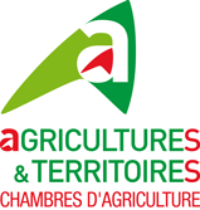Document type : Draft Convention, Convention on Animal Protection
Authors: Nigel Blackaby, Daina Bray, Nicolas Cordoba, David Favre, Rosario Galardi, Laurie Morgan, Rajesh Reddy, and Joan Schaffner
Preview: A new international treaty for animal welfare and pandemic prevention.
The Convention on Animal Protection (CAP) is a draft treaty prepared by Lawyers for the Convention on Animal Protection, a team of practicing lawyers and legal academics specialized in international law and animal law following the passage by the American Bar Association House of Delegates in February 2021 of Resolution 101C.
The resolution "urges all nations to negotiate an international convention for the protection of animals that establishes standards for the proper care and treatment of all animals to protect public health, the environment, and animal well-being. The focus of the CAP is on global animal well-being, public health and the environment as an effective tool to mitigate the risk of future pandemics.
The Draft Convention on Animal Protection is open for public comments through February 25, 2022. Please send all comments to contact@conventiononanimalprotection.org
Download the Draft Convention on Animal Protection
The CAP contains four parts: an introduction, substantive provisions, provisions on functioning of the treaty, and an annex identifying species with a high risk of transmitting zoonotic diseases and other pathogens to humans and other animals.
In particular, the CAP provides regulations on human interactions with animals in several broad categories:
- all animals (Article 1);
- animals deemed to have a high risk of hosting viruses or other pathogens that pose a serious risk to public or animal health (Article 4);
- companion animals (Article 10);
- commercial animals (Article 11);
- animals used in scientific research and testing (Article 12); and
- animals used in entertainment (Article 13).
The CAP provides general fundamental principles in accordance with the One Health approach, which recognises the inherent interconnectedness of animal well-being, public health, and the environment. These principles provide that humans have an obligation to act responsibly toward animals and their habitats, among other sentiments (Article 1).
Regulations aimed to prevent future pandemics include systems of identifying high-risk animals and prohibiting and restricting certain human interactions with these animals, including the capture, consumption, sale, and trade of these animals (Article 4).
The CAP also contemplates the adoption of the first sets of international minimal standards of care for animals, including obligations to provide animals suitable and sufficient food and water, adequate shelter from adverse environmental conditions, and adequate opportunities for exercise and mental stimulation (Articles 10, 11, 12, and 13). The draft treaty also contains more specific standards for animal transportation (Article 9), animals used in scientific research and testing (Article 12), and companion animals (Article 10).
The CAP seeks to regulate human interaction with wildlife, the transportation of animals, and human treatment of companion animals, commercial animals, and animals used in research and entertainment. The CAP also contemplates the negotiation of subsequent protocols on specific areas of animal protection at a greater level of detail than the general principles set out in the treaty itself.
Draft convention with EFSA video support on 31 January 2022 (2 min 56): A New Convention on Animal Protection for Public Health, Animal Welfare, and the Environment





